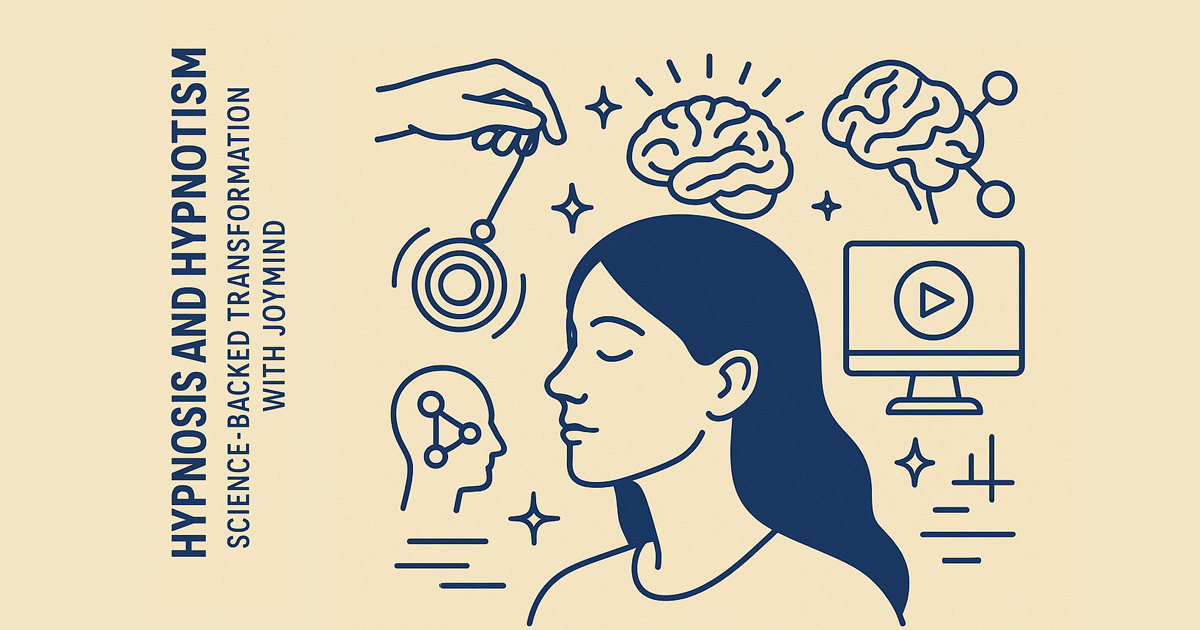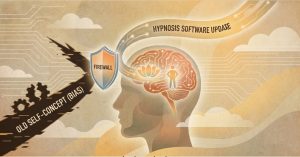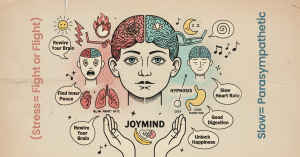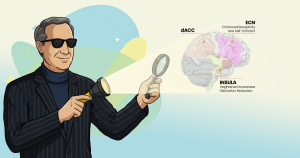Hypnosis and Hypnotism: Science-Backed Transformation with Joymind
By Dr. Michael Glock
Founder, Joymind – The Largest Clinical Hypnotherapy Platform in the Americas
The terms hypnosis and hypnotism still conjure images of swinging watches or theatrical stunts. But today, a growing body of clinical evidence and brain-based research is elevating hypnosis into a legitimate tool for mental and emotional transformation.
At Joymind, we offer clinical and medical hypnotherapy delivered by specialists trained in neuroscience, trauma healing, and behavior change. With thousands of successful outcomes, Joymind’s model of care shows how hypnosis and hypnotism are tools of precision—not persuasion.
Hypnosis vs. Hypnotism: What’s the Difference?
Hypnosis refers to a natural, altered state of consciousness characterized by focused attention and increased receptivity to suggestion. You likely experience similar states during deep daydreaming, reading, or losing yourself in music.
Hypnotism, by contrast, is the practice of inducing this state. It can be used for entertainment or, more powerfully, for therapeutic healing. At Joymind, hypnotism is clinical, grounded in science—not spectacle.
What Happens in the Brain During Hypnosis?
Recent research confirms that hypnosis involves observable brain changes—especially in the default mode network (DMN), which governs self-talk, memory, and identity. A 2017 systematic review of fMRI studies found consistent functional changes in the DMN during hypnosis, including reduced activity in the medial prefrontal cortex and increased connectivity between the executive and salience networks (Jiang, H., et all., 2017).
These changes make it easier for people to:
- Let go of rigid self-narratives.
- Regulate emotions more effectively.
- Create new mental habits at the neural level.
In short, hypnosis makes the mind more pliable—opening space for constructive transformation.
Emotional Regulation and Emotional Imagination
In my chapter in Jungian and Interdisciplinary Analyses of Emotions (Brodersen, Meier, & Musso, 2025), I describe how hypnotherapy taps into emotional imagination, an embodied faculty that mirrors emotional experiences through symbols and imagery. This capacity is supported by mirror neuron systems, allowing imagined experience to neurologically mimic lived experience.
Clinical hypnosis amplifies this system, helping individuals regulate internal emotional states and re-script trauma narratives. Through guided trance, clients visualize alternative realities—thus reinforcing neurological changes in their perception, mood, and identity.
Hypnotherapy Works: The Clinical Evidence
Hypnosis is now an accepted intervention across numerous health domains. Studies show statistically significant improvements in:
- Anxiety and PTSD
- Smoking cessation
- Weight and eating disorders
- Chronic pain and insomnia
- Trauma recovery
- Emotional regulation and confidence
- Addiction and compulsive behavior
In a pioneering study on eating disorders, Barabasz (2007) demonstrated that self-hypnosis helped bulimic patients reduce symptoms with long-term success. The study showed that hypnosis enhances internal control and restructures the client’s sense of agency—key factors in sustainable recovery.
Additionally, brain-based studies have shown that hypnotizability correlates with specific neural signatures. For instance, Hoeft et al. (2012) found that highly hypnotizable individuals exhibit distinct patterns in the anterior cingulate cortex and other areas linked to attention, inhibition, and self-awareness.
What Hypnosis and Hypnotism Are Good For
At Joymind, clients seek hypnotherapy for many life-changing reasons. Hypnosis has proven effective for:
- Stress and anxiety relief
- Deep, restorative sleep
- Emotional eating and weight loss
- Trauma and grief resolution
- Smoking and addiction recovery
- Self-confidence and public speaking
- Procrastination and performance blocks
- Pain management and autoimmune conditions
Explore more at https://joymind.com
Your Life Is a Story—But You Can Reframe the Script
Many of us live within unconscious narratives that were shaped by early experiences, traumas, or inherited beliefs. Narrative therapy helps people identify these patterns and rewrite them (White & Epston, 1990).
But as Galen Strawson (2004) argued, we are not obligated to live inside a fixed life story. Identity is fluid and multi-selved. Hypnosis provides direct access to the “narrative engine room”—a space where core beliefs and habits can be gently edited.
This is where hypnotherapy transcends talk therapy: by immersing the client in emotionally rich, imaginal landscapes, hypnosis allows symbolic shifts to become lived ones (Brodersen et al., 2025).
The Joymind 3-Step Breakthrough Method
Our proprietary method combines narrative depth with neuroscience:
1. Insight Activation
Uncover limiting beliefs and unconscious patterns that drive behavior.
2. Trance Repatterning
Using guided clinical hypnosis, rewire your inner story through suggestion, NLP, and visualization.
3. Daily Reinforcement
Custom audio recordings and brain-training tools reinforce the new story until it becomes second nature.
Meet Our Experts
Our Joymind specialists include licensed hypnotherapists, psychologists, trauma-informed coaches, and certified clinical professionals. Each one is trained in neuroscience-based transformation, offering individualized care for people at all stages of life.
Whether you’re healing from heartbreak, preparing for a major decision, or simply seeking emotional clarity—Joymind meets you at the threshold of your next chapter.
Final Thoughts: Hypnosis and Hypnotism Are Evolving
Hypnosis and hypnotism have entered the era of neuroscience and clinical integration. Far from fringe, hypnotherapy is now recognized as a powerful, measurable, and replicable practice for personal transformation.
At Joymind, we help you shed old stories and install new scripts—ones aligned with your healing, creativity, and purpose.
References
Barabasz, M. (2007). Efficacy of hypnotherapy in the treatment of eating disorders. International Journal of Clinical and Experimental Hypnosis, 55(3), 318–335. https://doi.org/10.1080/00207140701338688
Brodersen, E., Meier, C. A., & Musso, C. (Eds.). (2025). Jungian and interdisciplinary analyses of emotions: Method and imagery (Vol. 1, Part 1, Ch. 3: A Frontline Report by M. Glock). Routledge. https://tinyurl.com/hypnosisandhypnotism
Hoeft, F., Gabrieli, J. D. E., Whitfield-Gabrieli, S., Haas, B. W., Bammer, R., Menon, V., & Spiegel, D. (2012). Functional brain basis of hypnotizability. Archives of General Psychiatry, 69(10), 1064–1072. https://doi.org/10.1001/archgenpsychiatry.2011.2190
Jiang, H., White, M. P., Greicius, M. D., Waelde, L. C., & Spiegel, D. (2017). Brain Activity and Functional Connectivity Associated with Hypnosis. Cerebral cortex (New York, N.Y. : 1991), 27(8), 4083–4093. https://pmc.ncbi.nlm.nih.gov/articles/PMC6248753/
Strawson, G. (2004). Against narrativity. Ratio, 17(4), 428–452. https://doi.org/10.1111/j.1467-9329.2004.00264.x
White, M., & Epston, D. (1990). Narrative means to therapeutic ends. Norton & Company. https://amzn.to/3TGShZ0
















